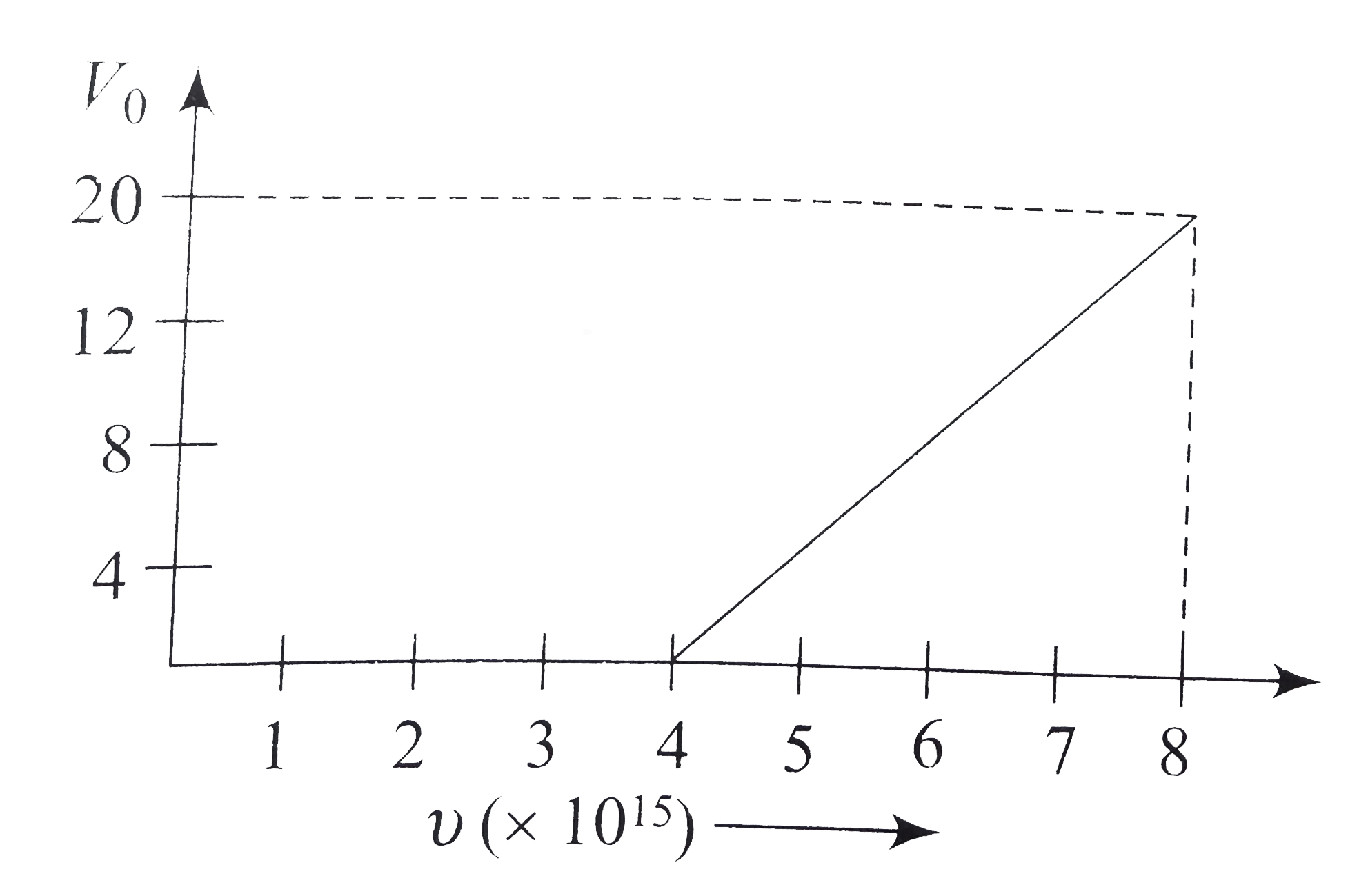When a high frequency electromagnetic radiation is incident on a metallic surface, electrons are emitted from the surface. Energy of emitted photoelectrons depends only on the frequency of incident electromagnetic radiation and the number of emitted electrons depends only on the intensity of incident light.
Einstein's protoelectron equation [Kmax=hv−ϕ} correctly explains the PE, where υ= frequency of incident light and ϕ= work function.
Q. The slope of the graph between stopping potential and frequency is [here h is the Planck's constant and e is the charge of an electron] is
A will emit photoelectrons but B will not
B will emit photoelectrons but A will not
both A and B will not emit photoelectrons
neither A nor B will emit photoelectrons
The correct Answer is:B
The energy of the incident photon is
E=hcλ=6.6×10−34×3×1083300×10−10
=3.75 eV
A will not emit photoelectrons because energy of incident photon is less than work function of A.
Topper's Solved these Questions
- BOOK - CENGAGE PHYSICS ENGLISHCHAPTER - PHOTOELECTRIC EFFECTEXERCISE - Integer9videos
PHOTOELECTRIC EFFECT
- BOOK - CENGAGE PHYSICS ENGLISHCHAPTER - PHOTOELECTRIC EFFECTEXERCISE - Single Correct Answer Type7videos
PHOTOELECTRIC EFFECT
- BOOK - CENGAGE PHYSICS ENGLISHCHAPTER - PHOTOELECTRIC EFFECTEXERCISE - Multiple Correct10videos
PHOTOELECTRIC EFFECT
- BOOK - CENGAGE PHYSICS ENGLISHCHAPTER - NUCLEAR PHYSICSEXERCISE - ddp.5.514videos
NUCLEAR PHYSICS
- BOOK - CENGAGE PHYSICS ENGLISHCHAPTER - RAY OPTICSEXERCISE - DPP 1.612videos
RAY OPTICS
Similar Questions

When a high frequency electromagnetic radiation is incident on a metallic surface, electrons are emitted from the surface. Energy of emitted photoelectrons depends only on the frequency of incident electromagnetic radiation and the number of emitted electrons depends only on the intensity of incident light.
Einstein's protoelectron equation [Kmax=hv−ϕ] correctly ecplains the PE, where υ= frequency of incident light and ϕ= work function.
Q. For photoelectric effect in a metal, the graph of the stopping potential V0 (in volt) versus frequency υ (in hertz) of the incident radiation is shown in Fig. The work function of the metal (in eV) is.View SolutionThe slope of the graph drawn between stopping potential and frequency of incident radiation will be
View Solution
Knowledge Check
- Question 1 - Select One
Assertion : Photoelectric current depends on the intensity of incident light.
Reason : Number of photoelectrons emitted per second is directly proportional to intensity of incident radiation.AIf both assertion and reason are true and reason is the correct explanation of assertion.BIf both assertion and reason are true but reason is not the correct explanation of assertion.CIf assertion is true but reason is false.DIf both assertion and reason are false.
When ultraviolet radiation is incident on a surface , no photoelectrons are emitted If a second beam causes photoelectrons to be ejected, it may consist of
View SolutionWhen an electro-magnetic radiation is incident on the surface of metal, maximum kinetic energy of photoelectron depends on-
View SolutionAssertion (A) : On increasing the frequency of light larger number of photoelectrons are emitted .
Reason (R) : The number of electrons emitted depends on the intensity of incident light.View SolutionThe kinetic energy of photo electrons depends on
(A) Frequency of incident radiation
(B) Velocity of incident radiation
(C) Intensity of incident radiation
(D) Wavelength of incident radiationView SolutionLight of wavelength 3000Å is incident on a metal surface whose work function is 1 eV. The maximum velocity of emitted photoelectron will be
View SolutionLight of wavelength 4000A∘ is incident on a metal surface. The maximum kinetic energy of emitted photoelectron is 2 eV. What is the work function of the metal surface?
View SolutionThe slope of frequency of incident light and stopping potential for a given surface will be
View Solution

